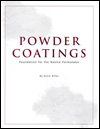Changing Your Particle Size Distribution Will Also Impact Your Molecular Weight Distribution




It may be desirable to change the particle diameter of your latex to give improved performance or physical properties for a given application. However, emulsion polymers are complex products, and more often than not changes in one property also result in changes in other properties. This interdependency applies to particle size and molecular weight. The average molecular weight of a latex can be influenced by a number of factors, but it is often not realized that the number of particles in the latex (which is directly related to particle size) is important in determining molecular weight.
The reason is not obvious; in each latex particle, the growth of a new chain starts when a radical generated in the aqueous phase enters a particle and starts adding monomer. Chain growth stops when another radical enters the particle and terminates the growing chain. The time span between two radicals entering a particle represents how long the chain has to grow; a longer time interval gives longer chains (higher molecular weight).
Now, if we compare two latexes, one with a high number of particles (smaller size) and one with a low number of particles (larger size), the time interval between radicals entering a particle will be longer when more particles are present (assuming the initiator concentration and reaction temperature are the same for both latexes). In other words, the latex with smaller particle size will have higher molecular weight. If you are using a significant concentration of chain transfer agent, you will not see this effect, since it is now the chain transfer agent that determines molecular weight.
There are ways to both change particle size AND keep molecular weight constant. These are discussed in our workshop on Scaleup and Commercial Production of Emulsion Polymers.
As always, we welcome your comments and questions via our website, www.epced.com.
The “Did You Know….?” series is a bi-monthly note from Emulsion Polymers Consulting and Education (EPCEd) that is intended to present simple questions about topics that are important to those working in the emulsion polymers area. Short and concise answers to those questions are presented to educate readers and to elicit comments and further discussion. Some readers will already know the answers and be familiar with the topic while others, especially those newer to the field, will benefit from the answers and discussion. Experienced practitioners may also find new insights in the discussion. Paint & Coatings Industry magazine has partnered with EPCEd to share the “Did You Know” notes with our readers throughout the year.
Looking for a reprint of this article?
From high-res PDFs to custom plaques, order your copy today!











